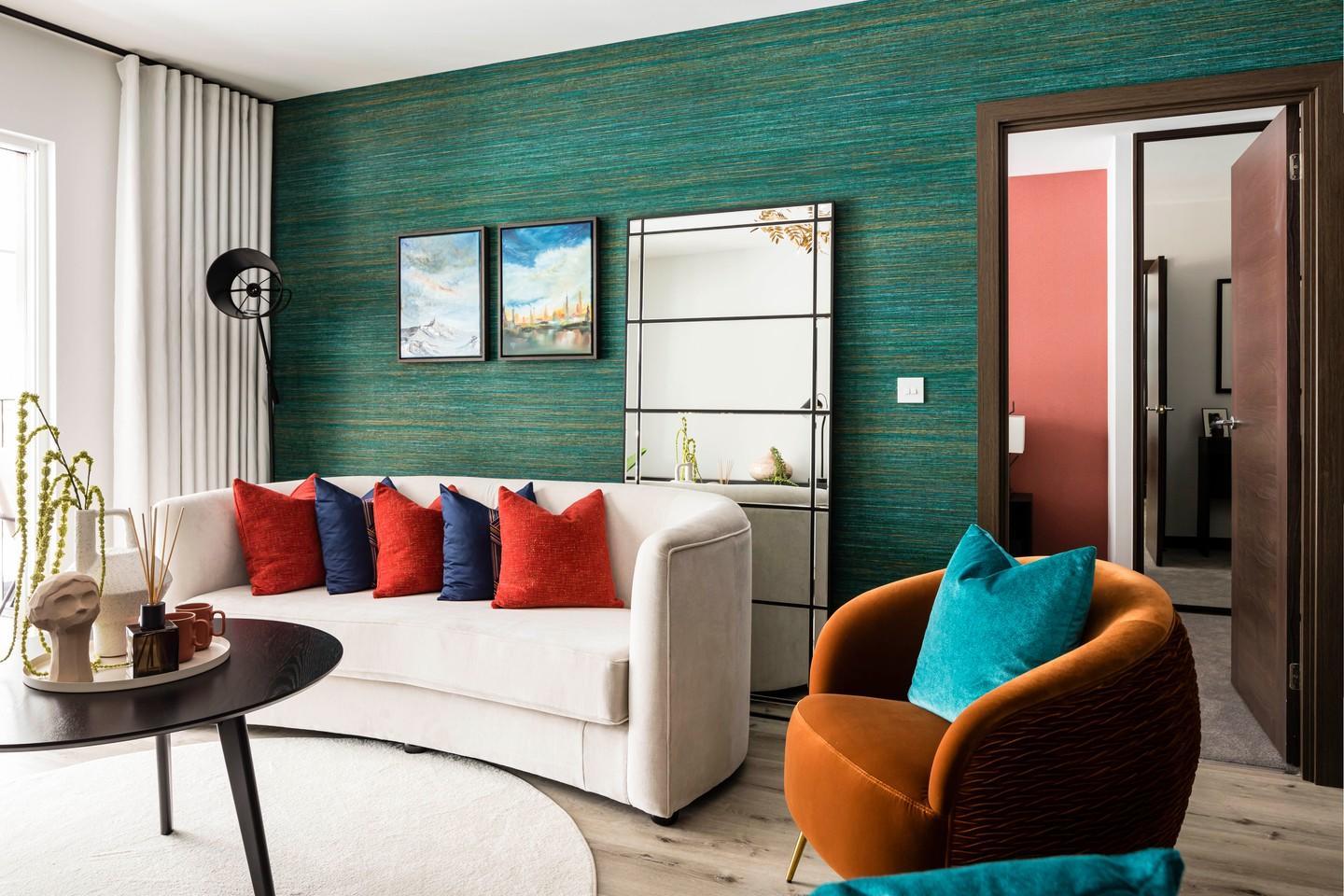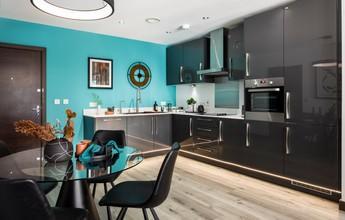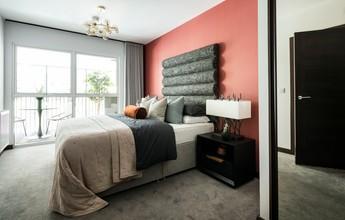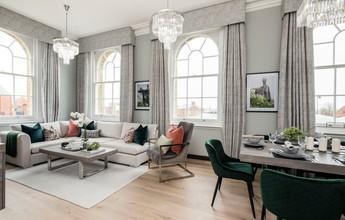
Owners of Weston Homes are shopping for longevity and style, says Barbara Chandler
So, you have bought your dream Weston Home, secure in the knowledge that fittings and surfaces – in particular the floorings, worktops, cabinets, sinks, showers and bathtubs – are high-spec and designed to last for many years. Much has been crafted in the company’s own state-of-the-art workshops, or meticulously sourced from trusted, long-established suppliers.
Quality checks are stringent, with regular testing. “We’ve always built homes to last, indeed homes for life,” says founder and chairman Bob Weston, whose company itself exemplifies longevity, shortly celebrating 35 years of home building.
Now buyer, it’s over to you. How will you furnish your new home?
“Sustainability is high on our clients’ agenda,” says Shaun Weston, Bob’s son, and director of Weston Logistics. “And above all, our residents are looking for longevity.”
Long-lasting homewares mean less goes to landfill, conserving precious energy and resources, and cutting down on transport fuel. Goods with a long life also save the buyer money and deliver the lasting satisfaction of a choice well made.
“Go first for the key pieces of furniture above all else,” says interior designer Chloe Rosamond, of Voyage Interiors, who has been creating show properties for Weston Homes for seven years in stunning heritage conversions such as the former Cambridge Military Hospital in Aldershot – now known as Gun Hill Park – plus The Laundry Works in Watford and The Venue in Hayes, west London. “Prioritise the sofa, dining table and your bed.”
Chloe’s warning is succinct and straight from the hip: “If you buy cheap, you’ll buy twice.” She adds: “And if you compromise, you won’t love your furniture and you’ll start thinking of a replacement. Invest in well-made, quality pieces and you will have them for decades, cutting waste and saving money.”
Felicity Stevens of Haus Interiors agrees. She also designs show homes for Weston Homes. She advises: “Spend on what you use a lot – upholstery, for example, and your bed. These are the largest pieces you’ll have in your home, so it’s vital that they’re good quality and aesthetically pleasing.”
Material matters
In general terms, hard materials will last longer than soft ones. Granite and stone, as used for floorings and worktops by Weston Homes, have already formed for millions of years within the earth before they are quarried. Solid wood grows old gracefully. Stainless steel, used in sinks and drainers, is notable for longevity and guarantees of 50 years are not unknown. However, other metals of varying softness will acquire a patina, while bronze, brass and copper can be buffed up time and again to their original glory. In all cases, when choosing for your home, check whether there’s a coating, varnish or lacquer. Ask how long such a finish is likely to last and, crucially, whether it can be reapplied.
Soft materials are obviously less durable, and fibres and constructions vary greatly. We all love wool, linen, cotton and silk – but natural fibres on their own are not necessarily the best choice. Often, the addition of a small amount of nylon or polyester will dramatically raise a fabric’s practicality and lengthen its life.
“For example, natural fibre curtains can contract as the atmosphere changes,” warns Chloe Rosamond. “A 100 per cent linen looks lovely but a warm, humid room can pucker the lining. You’ll have to have them remade.” She says the fibres in a fabric should be about a third manmade.
And ask about testing, particularly for fabric upholstery coverings. You’ll need a “Martindale rub test” of at least 10,000 to 15,000 for light domestic use, but look for 20,000 to 25,000 for heavier wear. Chloe’s tip: “Get your upholstery stain-guarded at the outset, because a simple spillage can ruin a whole sofa.”


Through the window
What about window treatments? “Shutters will really last,” observes Chloe. “But in general terms, curtains will last better than blinds. Choose colour-fast fabrics and add a soft-drape blackout lining for a little more protection.”
Felicity Stevens adds: “Window treatments that last longest are the ones that best suit their purpose; the ones that move smoothly and block out the light for a really good night’s sleep. But if you love daylight in your living room, consider sheers, for softness and privacy. Take time to research all the different curtain headings. I love a ‘wave’ fixed to the ceiling, which heightens a room with gorgeous, flowing fabric.”
Stylish dining
As for tableware, paying a little more can make a big difference to its longevity, so put your trust in a good brand name. Avoid cheap cutlery. Low-grade steel can pit and dull, with designs that lack balance and a cutting edge – so beware of 18/0. Top grades are marked 18/10, but 18/8 is acceptable and both are resistant to staining, rust and corrosion. The thickness of silver plate is measured in microns, 30 being a high quality. By the way, don’t mix stainless steel and silver in your dishwasher, as the silver may irreversibly lose its colour and shine.
When it comes to “china”, different types have varying lifespans. Everything is basically ceramic or pottery, being made from different clays and glazes, fired to a variety of temperatures. Earthenware is inexpensive and chunky but will chip easily, while terracotta is particularly brittle. Stoneware is thick and tougher. Porcelain is stronger still and comes in more elegant shapes. Bone china is the most robust – yet it’s also the thinnest and most translucent. Shapes that stack or nest are less prone to chipping.
And so to bed
Sheets also have their numbers. A “thread count” tots up the threads in one square inch, adding together the warp (threads running vertically) and the weft (across). The higher the thread count, the better the quality. Around 230-280 is good, but 300-400 is excellent. Counts above that are more for luxury than practicality. “Egyptian” is the best quality cotton, but linen is stronger and heavier.


Colour trends
With new fashions promoted at every turn, what are the colours for interiors that will last? “Always, always, always have a neutral base,” Chloe insists. “Add colour as an accent, then you can change accessories but leave the items in which you’ve invested most. Cushions, ornaments and even artwork are easily changeable.
Grey has gone a bit out of fashion and taupe has made a big comeback, along with earthy tones for, say, ceramics and stoneware.”
Felicity advises: “Trends will always move in pattern and colour, but if you want to spend wisely, then I would focus on textures and softer/muted versions of your favourite shades. Ensure you keep some fresh shades of white and contrasting darker pieces to keep your interiors looking clean and current.”
Be sure to make your statement
You don’t have to be totally practical. Felicity says that, if you fall in love with an item and it’s within budget, you should buy it. “Of course you will shop with your head. But go with your heart, too.
“If there is an incredible vase, vintage artwork or statement console table, then buy it. You will love it forever and you can build an interior around your favourite piece.”